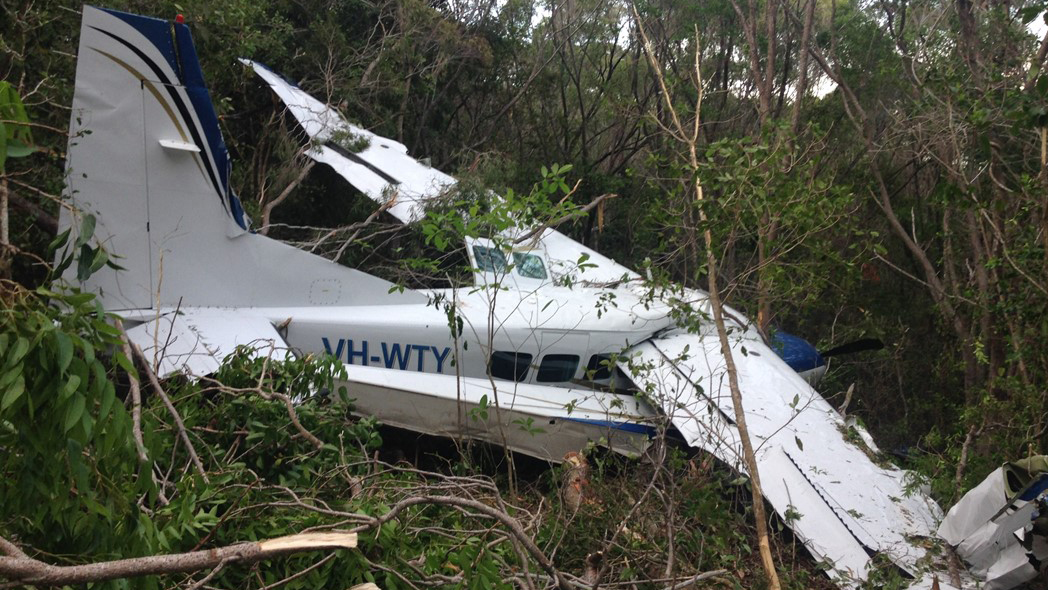
A Cessna Caravan floatplane operating a scenic charter flight over the Great Barrier Reef clipped trees and impacted dense scrubland while attempting to go-around after an aborted water landing, a new ATSB investigation report details.
The aircraft, with a pilot and 10 passengers on board, was attempting a landing at Whitsunday Island’s Chance Bay on 28 January 2016 when it bounced three times on the water’s surface, after the pilot reported holding off the landing in order to fly through an observed wind gust. After the second bounce, with the aircraft nearing the beach, the pilot increased engine power and initiated a go-around. A more pronounced third bounce, which occurred almost immediately after the second, resulted in the aircraft rebounding about 30 to 50 feet above the water.
While increasing power, the pilot perceived that the engine torque was indicating red, suggesting an engine over-torque for the selected propeller configuration. Noticing that the climb performance was less than expected with the flaps at the 30-degree setting, the pilot stopped increasing power and reduced the flap to 20 degrees.
As it climbed straight ahead towards a saddle, the aircraft’s climb performance was still below the pilot’s expectations. Assessing that the aircraft would not clear the surrounding rising terrain, the pilot turned right. However, during the turn the aircraft clipped trees before coming to rest in dense scrub about 150 metres from the eastern end of the main beach, near the top of a ridge.
Variable water conditions and the possibility of sharing the landing area with marine vessels means that every water landing has the potential to be markedly different.
The pilot promptly advised the passengers to exit and move away from the aircraft. Some of the passengers suffered minor injuries in the accident, but all were able to leave the aircraft quickly. There was no post-impact fire, but the aircraft was substantially damaged.
The ATSB’s investigation found that the aircraft’s initial contacts with the water were past the pilot’s nominated decision point and beyond the northern boundary of the water landing area. This, combined with the delay in initiating the go-around, reduced the options and margins available for a safe outcome.
“Variable water conditions and the possibility of sharing the landing area with marine vessels means that every water landing has the potential to be markedly different,” ATSB Director Transport Safety Stuart Macleod said.
“In this case, despite the perceptions of over-torque, the pilot initiated a go-around without using all available power and the optimal speed, turned towards higher terrain, and placed the aircraft in a down-wind situation, which ultimately resulted in the collision with terrain.”
Mr Macleod said a go-around is standard practice and is typically a safe option whenever landing conditions are not satisfactory.
“However, it is important that pilots consider aircraft performance and local conditions when planning an exit route, including conducting mental rehearsals of standard procedures.”
The investigation also found that the engine operating limitations detailed in the float manufacturer’s pilot operating handbook supplement were not consistent with other guidance and may have influenced the power level applied by the pilot during the go-around.
The investigation also noted that the aircraft was equipped with lap-sash seatbelts, which have been demonstrated to reduce injury, while the use of emergency beacons and satellite phone facilitated a timely response to the accident.
Read the report: Collision with terrain involving Cessna 208 Caravan, VH-WTY, 11 km north-east of Hamilton Island Airport, Queensland on 28 January 2016


